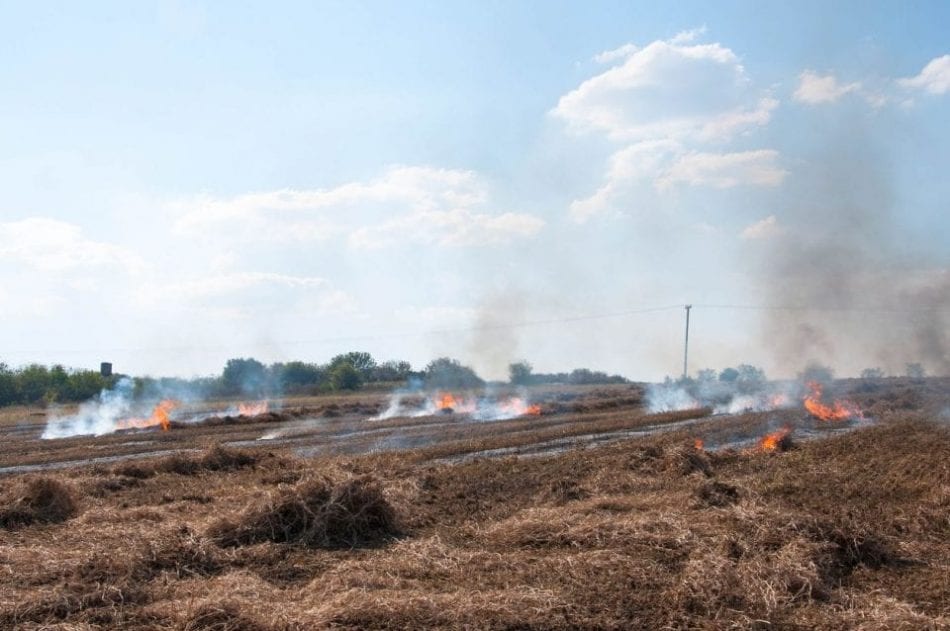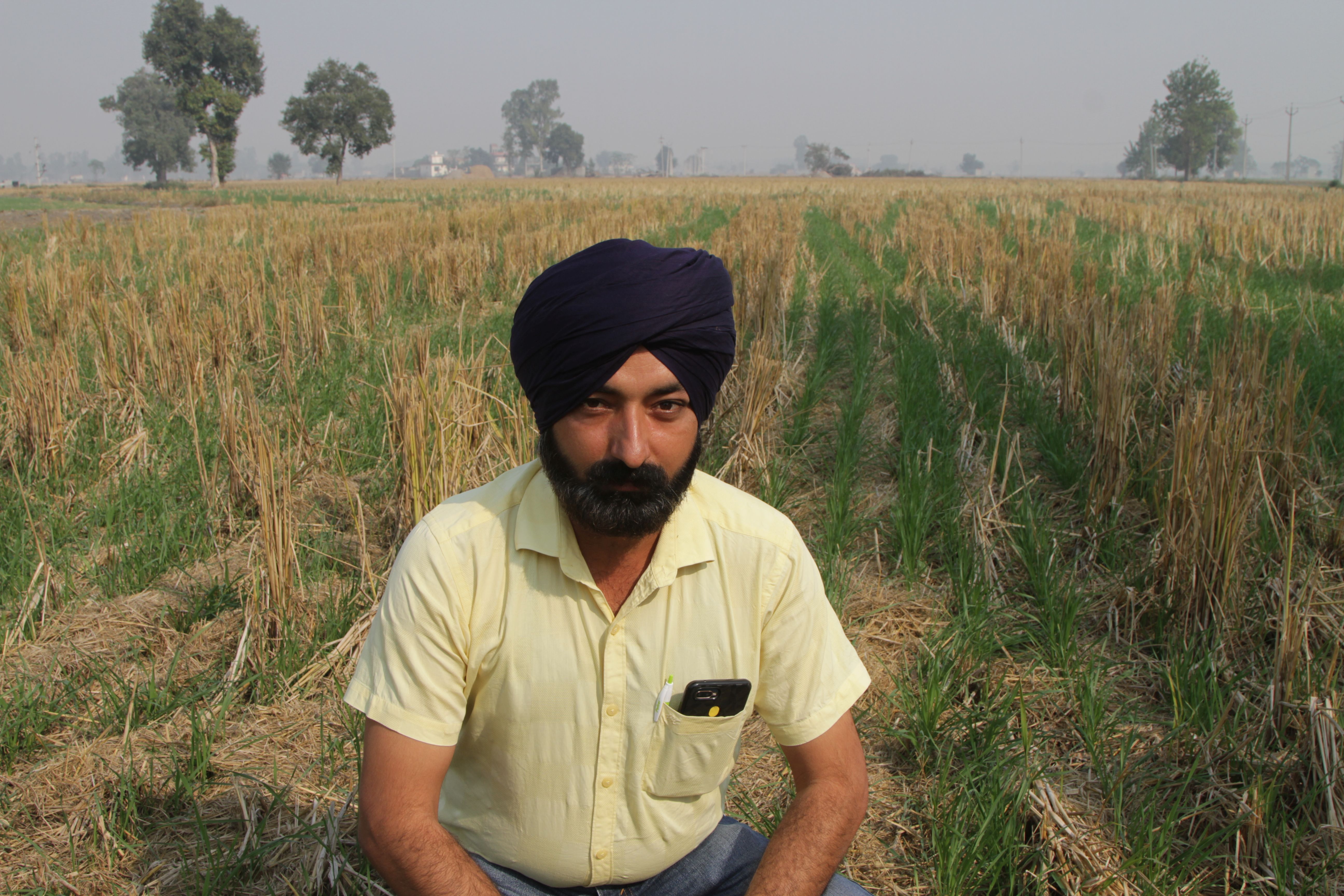
No-till, no burn method could be north India's answer to stubble burning

Both, Indian geneticist MS Swaminathan and economist Ramesh Chand are diffusing the policy response to the polluting practice of burning paddy stubble with impractical suggestions when the central government has backed a solution that is both economical for farmers and beneficial to the environment.
In a series of tweets, the venerable Swaminathan, who is regarded the father of India’s Green Revolution, has proposed “rice bioparks” which is his fancy term for industrial estates where stubble from paddy can be converted into “paper, cardboard and animal feed”. Agricultural economist and NITI Aayog member Chand, in an article in the Business Standard said that paddy straw and stubble are best converted into compressed natural gas (CNG).
Logistical roadblocks
Paddy stubble and straw left behind by combine harvesters are burnt in north-west India to prepare the fields for sowing wheat. This process, according to Punjab Agricultural University’s (PAU) director of research, Navtej Singh Bains, is best done in the last week of October and the first week of November to avoid a yield-reducing increase in temperature during the latter half of March when wheat enters the grain-filling stage.
In contrast, in south and east India, paddy straw is fed to the cattle. In Punjab, wheat straw is the preferred fodder and there is plenty of it. Cattle, in this part of the country, do not relish the straw of common rice as it is rich in silica. But the suggestions made by Swaminathan and Chand to avert burning are impractical because it would be logistically difficult to collect about 20 million tonnes of straw (of which about 15 million tonnes is currently burnt) in under a month from across three million hectares. Apart from the cost of raking, baling and transporting the straw, the resulting emissions will add to the pollution load.
Also read: Stop stubble burning or finish people with explosives, says SC
Enormous storage space will be required for the purpose. It takes one acre to store straw from 400 acres, says Punjab’s Agriculture Commissioner Balwinder Singh Sidhu. The straw, if left uncovered, runs the risk of getting decomposed as Punjab usually gets rain during Christmas time in December and Lohri in January, says Sidhu.
Taking so much of biomass out of the fields every season will also deplete them over time. Given the grave threat of pollution which rice crop residue burning poses, PAU’s Vice-Chancellor, Baldev Singh Dhillon, is willing to go along with “ex-situ management for the time being but ultimately it will have to be done in-situ.”
With this in view, a host of agricultural research institutions had recommended no-burn-no-till farming as the preferred way of dealing with paddy stubble and loose straw. These include the Indian Council of Agricultural Research (ICAR), PAU and CIMMYT, which is the Mexico-based centre from where Norman Borlaug triggered the Green Revolution in wheat. The government has incentivised this practice by allocating ₹1,150 crore last year as a subsidy for machines designed for it.
Feasible alternatives
Ploughing is now seen as an avoidable farming practice. It exposes the soil and depletes it of moisture. It damages the capillaries formed by roots that aerate the soil and keep it soft. Conservation agriculture, as it is called, is based on three principles: minimal mechanical soil disturbance, permanent soil organic cover and crop rotation. It is catching on. According to a paper cited by the Food and Agriculture Organisation (FAO), conservation agriculture has been spreading at the rate of 10.5 million hectares annually since 2008-2009 and in 2018 covered 180 million hectares or 12.5 per cent of the global cropland.
Wheat planting without tilling the fields or burning paddy stubble has been made possible by two mechanical devices. Conventional combine harvesters cut paddy about a foot above the ground. After separating the grain, they leave behind loose straw in piles as they advance. Raking this straw and baling it is expensive, so Punjab and Haryana farmers just set fire to it. But new combine harvesters cut paddy closer to the ground. Another device fitted at the rear chops loose straw and spreads it evenly across the field. This mat of straw conserves soil moisture, suppresses weeds and enables wheat to withdraw terminal heat.
Also read: Air pollution from stubble burning costing India USD 30 bn annually
Another device developed at Punjab Agricultural University in 2007 but adopted for use in 2014, slits the soil through the straw mat for sowing of wheat. Known as the Happy Seeder, it can follow the combine and plant wheat even as rice is being harvested. The residual moisture in the rice fields enables wheat to germinate. Over time, the paddy stubble and straw degrade and enrich the soil.

In conventional farming, farmers burn the straw and stubble, which kills beneficial insects and microbes in the soil, depletes it of moisture and pollutes the air. The minerals in the straw also go up in smoke. The harrow and the plough are used multiple times to churn the soil. Levelling the churned soil is another operation.
In no-burn-no-till farming, all these operations are avoided. A study published in August in the venerated Science journal estimated that planting wheat with the Happy Seeder and leaving the straw cover intact saved ₹5,300 per hectare. It was more profitable than conventional alternatives.
Change in mindset, need of the hour
Practising no-burn-no-till agriculture requires farmers to change their mindset. Many of them cannot accept farming that does not entail ploughing. Wheatfields with paddy stubble don’t look neat for about two months. Farmers will have to get used to that. They must irrigate after applying fertiliser and not before; otherwise, the nutrients will remain on the straw mat and not be available to the plants.
To make the transition farmers will have to be hand-held initially. State agriculture departments will have to re-orient themselves. Currently, they are more like subsidy-disbursing entities rather than knowledge-disseminating ones. They will also have to enforce the law that requires combines to be mandatorily equipped with straw-spreading devices and ensure that Happy Seeders are available on demand.
This correspondent visited some villages in Karnal and Ludhiana districts of Haryana and Punjab respectively and saw extensive adoption of no-till, no burn agriculture. The Borlaug Institute for South Asia (BISA), a joint venture of ICAR and CIMMYT in Ludhiana and ICAR’s Central Soil and Salinity Research Institute in Karnal were driving the initiative by guiding the farmers and also providing them on hire machines sponsored by the Sonalika group and Tata Trusts.
No-till agriculture is not recommended for all cropping systems. If potatoes and peas are grown after rice, the straw and stubble will have to be incorporated in the soil with the harrow and the plough. Such in-field variations of managing paddy stubble and straw are preferable from both economic and environmental points of view than taking the biomass out of the field.No-till, no burn agriculture could be our answer to stubble burning

